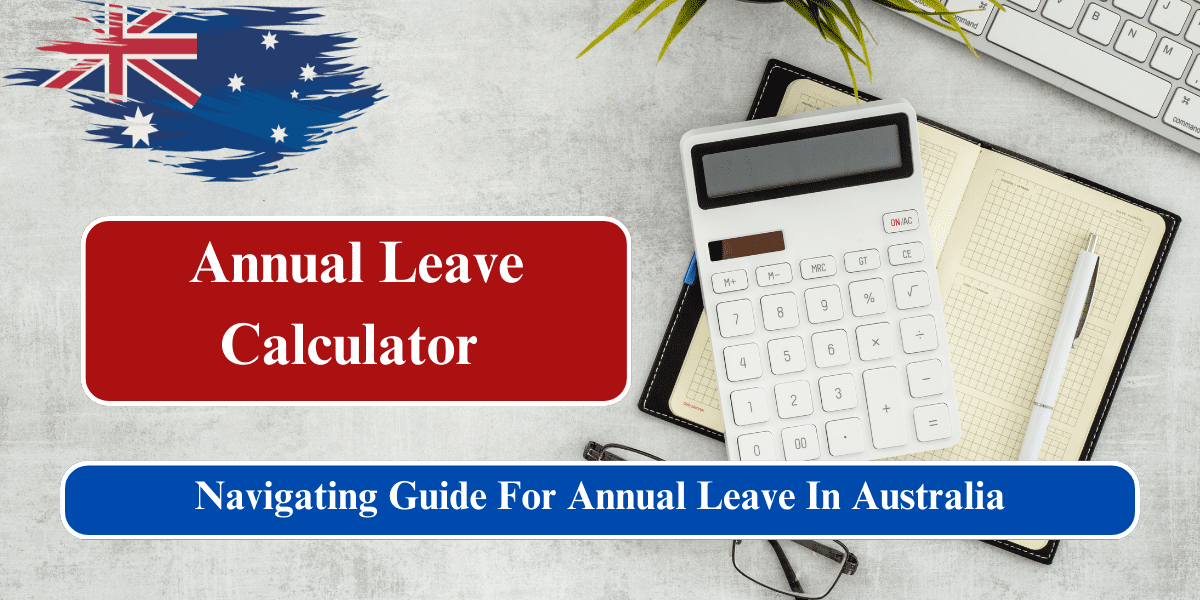If you’re an employer in Australia looking for guidance on how to calculate annual leave for your employees, you’ve come to the right place. In this guide, we’ll explain the key aspects of calculating annual leave, offering a clear, step-by-step approach and highlighting the unique features of the Australian work environment.
Whether you’re a seasoned business owner or new to the field, understanding the annual leave calculator is essential for fostering a positive workplace and adhering to employment laws.
Table of Contents
What is annual leave?
Annual leave, commonly referred to as vacation leave, is a key employment entitlement under Australian law, included in the National Employment Standards (NES). It allows employees to take time off work for rest, relaxation, and personal activities, while also providing financial support during their absence. This leave helps employees recharge and enhances their overall well-being and job satisfaction.
| Australia Special Benefits July 2024 |
| Waspi Ombudsman Payment Date 2024 |
| 1900 And 2400 Double Deposits |
| Td1 Form 2024 |
| Canada Public Pension Benefits 2024 |
Who is entitled to annual leave?
Annual leave entitlement is a benefit available to permanent full-time and part-time employees, allowing them to take a well-deserved break from work. However, casual employees do not accumulate annual leave. It’s essential to check the specific eligibility criteria, as they can differ based on legislation, awards, and individual employment agreements.
How do you calculate this leave?
Let’s look at the steps you need to take to make sure your workers get their annual leave without any problems.
Step 1: Know The Basics
Let’s start with some basic concepts. In Australia, a standard full-time work week is 38 hours. Part-time employees work fewer hours, and casual employees typically do not accrue annual leave.
Step 2: Calculate Accrual Rate
To calculate annual leave, it’s important to understand the accrual rate. Full-time employees earn a minimum of 4 weeks (20 days) of annual leave each year. Part-time employees accrue leave proportionally based on their hours worked. For a standard 38-hour work week, full-time employees accumulate 2.923 hours of leave per week. Typically, annual leave is not accrued for overtime hours. While some awards and individual agreements may offer time off instead of overtime or rostered days off (RDOs), these are distinct from annual leave.
Step 3: Incorporate Leave Loading (Optional)
Modern awards or employment contracts often include a leave loading, which provides an additional payment on top of an employee’s regular salary while they are on annual leave. This extra payment is intended to make up for the absence of overtime and penalty rates during the leave period. Leave loading is typically calculated as a percentage of the employee’s regular earnings.
Step 4: Calculation
The simple method for figuring out annual leave is:
Annual Leave Entitlement = Accrued Hours × Employee’s Hourly Rate
If leave loading is applicable:
Total Annual Leave Entitlement = (Accrued Hours × Employee’s Hourly Rate) + (Leave Loading Amount)
Example
Let’s consider an employee, Sarah, who works full-time (38 hours/week) and earns $30 per hour. Without any charges, her earned time off would be:
2.923 hours/week × 52 weeks/year = 152 hours
If her leave loading is 17.5%:
Total Annual Leave Entitlement = (152 hours × $30/hour) + (152 hours × $30/hour × 0.175) = $6,456
Understanding the Calculation
Now that we’ve gone through the numbers, let’s look more closely at some important parts:
Part-Time Employees
For part-time employees, annual leave is calculated proportionally based on their hours worked. For example, if a part-time employee works 20 hours per week, their annual leave entitlement will be 1.4615 times their weekly hours.
Leave Accrual During Leave
Employees continue to accumulate annual leave even while they are on leave. As a result, the amount of accrued leave at the beginning of the year may vary from the amount at the end of the year, particularly if the employee takes time off during that period.
Leave Loading Variations
Although leave loading isn’t a legal requirement, certain industries or employment contracts may include it. Be sure to review your relevant award or agreement to ensure compliance with the applicable provisions.
Calculating for Irregular Hours
If your employees have varying work hours, you might need to compute their average weekly hours over a defined period to accurately determine their annual leave accrual.
Payment for Unused Leave
In Australia, when an employee departs from a company, they are typically entitled to receive payment for any unused annual leave they have accrued. In certain situations, employees with a significant amount of accumulated annual leave—usually at least 8-10 weeks—can request to cash out a portion of their leave balance. However, they are generally required to retain a minimum amount of leave.
How annual leave accumulates
Annual leave starts accruing from the employee’s first day on the job, including during the probation period. Leave accumulates progressively throughout the year, and any unused annual leave will carry over to the following year.
Employees earn annual leave when they are on:
- Paid leave such as:
- Paid annual leave
- Paid sick and carer’s leave
- Paid family and domestic violence leave
- Community service leave including jury duty
- Long service leave
Employees don’t get annual leave when they are on:
- Unpaid annual leave
- Unpaid sick/carer’s leave
- Unpaid parental leave
The Paid Parental Leave Scheme run by the Australian Government is not paid leave. During the time someone is receiving benefits from the scheme, they do not accrue annual leave if they are on unpaid leave from their employer. Additionally, leave does not accrue during any period of annual leave that has been cashed out.
Annual leave calculation guide
For more information, you can visit www.dmirs.wa.gov.au/annual-leave or by calling Wageline on 1300 655 266
Insightful Tips for Annual Leave Calculator Accuracy
- Communication is Key: Ensure regular and transparent communication with your employees about their annual leave entitlements and usage. This approach builds trust and helps avoid misunderstandings.
- Consider Industry Awards: Different industries have different regulations and entitlements for annual leave. It’s important to understand the specific requirements for your sector.
- Consider Other Industrial Instruments: Enterprise Agreements and individual contracts might include extra annual leave benefits.
- Leave Loading Variations: Certain industries or roles may have varying leave loading percentages. Ensure you’re aware of any specific variations that apply.
- Annual Leave Payouts: When an employee’s employment concludes, they might be eligible for a payout for any accrued but unused annual leave. Accurately calculating this amount is essential to ensure compliance with termination entitlements.
- Keep Up with Legislative Changes: Australian employment laws and regulations can change over time. Stay updated on any developments that could affect how annual leave is calculated.
- Annual Leave In Advance: In some situations, employees may take annual leave in advance (i.e., where they have not accrued enough paid leave to cover the time they propose to take off from work). If you do this, you should keep a careful record of discussions of this with employees and ensure that you debit and credit the employee’s leave balance appropriately.
- Days vs. Hours of Leave: Employers should always review awards to understand how employees accrue leave and the correct calculation methods. For example, shift workers on a 12-hour day roster may need more than 7.6 hours to take a full day of annual leave, but many awards address this scenario. Consulting the awards ensures that employees are accurately accruing their leave entitlements.
Key Takeaways
Calculating annual leave accurately is not only a legal requirement but also a demonstration of your commitment to your employees’ well-being. By mastering the process, you create a harmonious work environment and support a healthy work-life balance. Keep in mind that employment laws can be intricate and may differ by industry, so it’s wise to consult a professional to ensure you stay compliant.
FAQs
How can I calculate my annual leave?
The formula to calculate annual leave is straightforward: Annual Leave Entitlement = Accrued Hours × Employee’s Hourly Rate Total Annual Leave Entitlement = (Accrued Hours × Employee’s Hourly Rate) + (Leave Loading Amount) 2.923 hours/week × 52 weeks/year = 152 hours.
What is the formula for annual leave?
To calculate pro-rated annual leave, use this formula: (Number of completed months of service ÷ 12) × Total annual leave entitlement.




